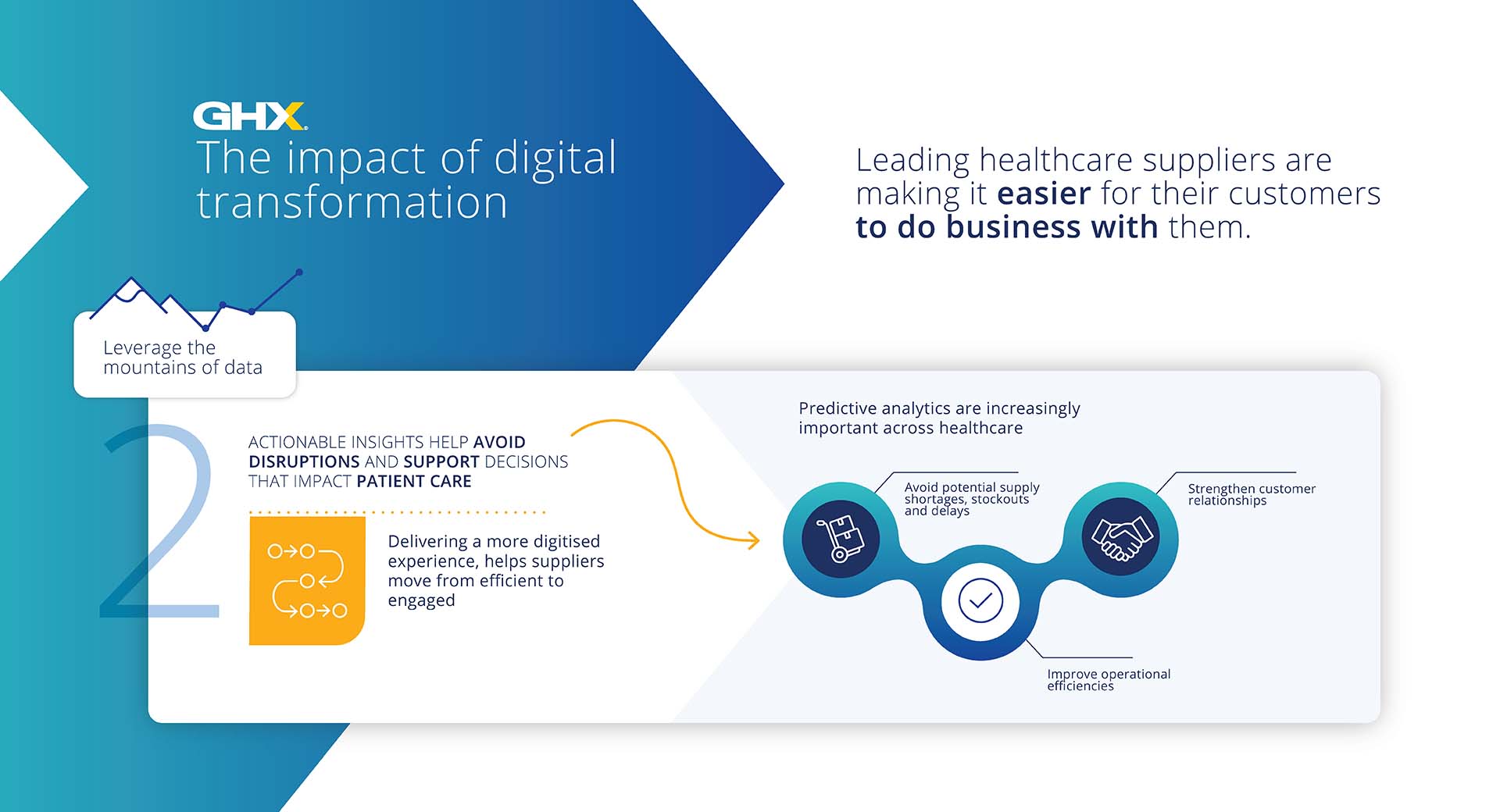Leveraging Data for Analytics and Insights
 Digital transformation brings many advantages along with an abundance of data. If suppliers can harness this data to predict future events reliably, they can gain a competitive advantage and better support decisions impacting patient care. The key to success is predictive analytics.
Digital transformation brings many advantages along with an abundance of data. If suppliers can harness this data to predict future events reliably, they can gain a competitive advantage and better support decisions impacting patient care. The key to success is predictive analytics.
Data as the Foundation for Critical Business Decisions
Leading healthcare suppliers are embracing the needs of their healthcare provider customers for more automation from end to end in the supply chain. A well-planned digital transformation strategy helps to contain costs, support supply chain resiliency, and distinguish leading suppliers from the rest of the pack.
From the first step of digitalisation comes an abundance of data. But for all stakeholders to reap the value from the output, we need a way to understand and put the data to use in a way that drives better patient outcomes. Predictive analytics can help suppliers and customers support critical business decisions impacting patient care.

Making Sense of the Mountains of Data
When you glean actionable insights from your data, it helps to avoid supply chain disruptions and supports decisions that impact patient care.
Digitalisation is the critical first step in this journey because it creates the data foundation. However, a digital customer experience goes well beyond automation. It leverages data in order to change behaviour and results. As the volume of data continues to grow exponentially daily, it is driving suppliers to evolve their approaches to customer engagement further.

Applying Predictive Analytics
The next critical step in building a digital customer experience is to transform the right data into actionable insights.
When applying predictive analytics to healthcare supply chain data, they can help support critical business decisions that improve patient care and avoid potential supply shortages, stockouts and delays.

Digital Customer Experience as a Competitive Advantage for Sustainable Customer Relationships
Predictive analytics will continue to play an increasingly important role in the healthcare supply chain, enabling suppliers to gain a competitive advantage by making sense of the mountains of data.
For example, it can help pinpoint which supplies are most effective for a particular patient cohort and how to deliver them in the most cost-effective way. This can result in better patient outcomes and improved operational efficiencies. It also helps build stronger relationships between providers and suppliers and, in turn, between providers and patients.
A digital customer experience, extended to the point of care, aligns suppliers with customer needs. Coupling this with predictive analytics transforms the experience from efficient to engaged.
[Originally published on May 02, 2022 in Medical Product Outsourcing Magazine]
In the third part of our special on digital transformation, learn how suppliers must respond to the increasing complexity of the healthcare supply chain to position themselves for the future.